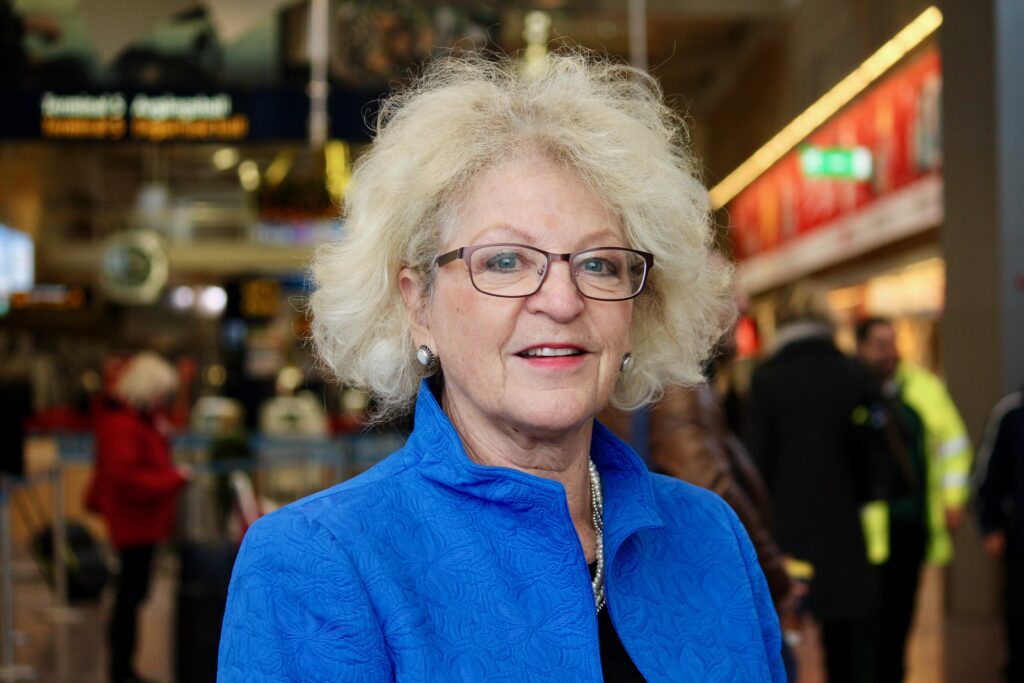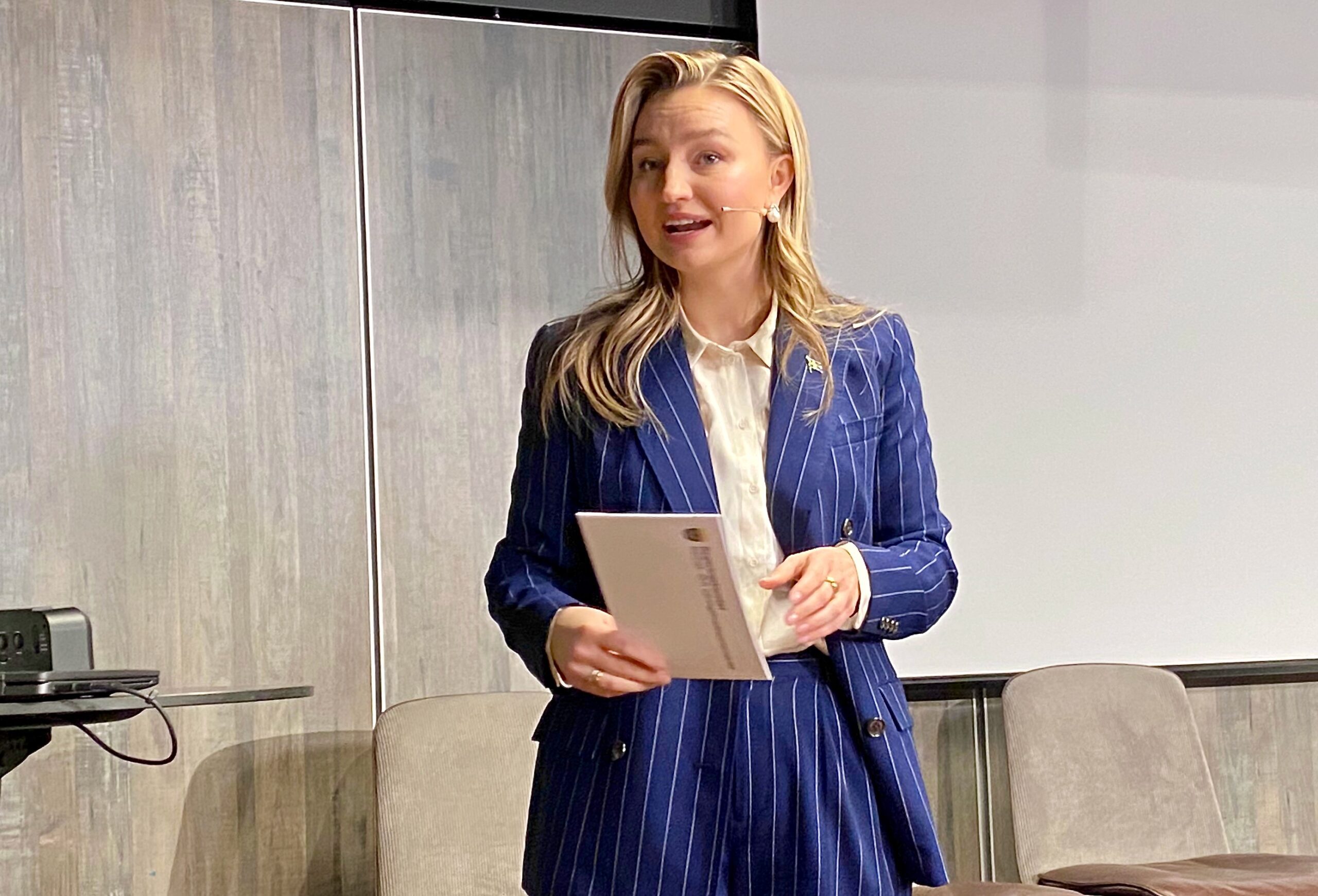This article has been translated with DeepL.
HELLO THERE! Candida Brush – co-founder of the world’s largest research network on women’s entrepreneurship
- Published: 24 May 2024,
- 9:39 AM
- Updated: 24 May 2024,
- 11:48 AM

On June 1-3, Esbri and Babson College will host the Diana International Research Conference in Stockholm. Since the research network was founded by Esbri and the five professors behind the Diana project 21 years ago, a lot has happened in the field of women’s entrepreneurship – both in practice and in academia. Professor Candida Brush has been involved from the start.
Besides the fact that the Diana network has grown significantly since its inception in 2003, with over 700 researchers from 47 countries in total over the years – how have the conditions for women to start and run businesses changed in just over 20 years, from a global perspective?
– At that time, twice as many men were likely to start businesses as women, and women dominated the service sector. In many countries, women’s entrepreneurship was primarily based on necessity, a way out of poverty.
– Moreover, policies, training programmes and the social recognition of women’s entrepreneurship were under development and not very widespread at all. Especially, not in less developed economies. And there was very little access to growth capital, such as equity and debt.
– Today, in countries around the world, there are now education, training, childcare and other programs that help support women entrepreneurs and their businesses.
– The latest Global Entrepreneurship Monitor (GEM) report (LINK) shows that one in six women, compared to one in five men, intend to start a business and that this intention is highest in low-income countries. Similarly, one in ten women, compared to one in ten men, have started a business. Globally, we also see more women wanting to grow and more women than men in retail. However, there are fewer women in internet, communication and technology.
What are the main obstacles today to women having the same opportunities as men to start and run businesses?
– The biggest obstacle is the homogeneity mindset, that all women are the same (or that all entrepreneurs are the same). This perception permeates entrepreneurship programs, policies and training. It is assumed that if you offer a set of entrepreneurial programs, training or support, anyone can become a successful entrepreneur.
– But context, embeddedness and intersectionality matter. Entrepreneurs are characterized by their diversity in so many different areas – income, ethnicity, cultural beliefs, family formation, industry and more. Assuming that everyone is the same means that women entrepreneurs may qualify for certain supports or have access to resources. Not because they are women, but because of other factors.
– The ‘homogeneity obstacle’ is exacerbated in the growth phase as women seek access to capital, labor, premises and other resources needed for growth, largely because stereotypes and prejudices about who is a successful entrepreneur come into play.
What are the key actions by policy makers and other decision makers to create equal conditions and opportunities for women and men to run businesses?
– Three things. First, the policy must be based on accurate and up-to-date reporting and data, not on outdated and unfounded facts.
– Then policy makers then need to look at the assumptions on which the policy is built. Do they assume that the entrepreneurial ecosystem is inclusive? That there is equality in business start-ups? Questioning underlying assumptions is crucial to ensure effective policies.
– Third, they need to stop expecting all women to fit a certain template. Because if they don’t all have the expected resources and skills, there is a risk that it will be seen as a deficiency in the woman. This assumption often drives policies to make women fit the mold, without taking into account the context or income, experience, industry, etc.
What are the bright spots you see that can help women have the same opportunities to start and run businesses as men?
– There are many exciting new alternative sources of funding available today. For example, crowdfunding is in many cases a good form of early stage capital for women. In addition, the number of women-friendly incubators and accelerators, as well as training programs that support the launch and growth of entrepreneurial women, is increasing.
– Colleges and universities are now more aware of the heterogeneity of entrepreneurs and provide different types of support, such as women’s networks and role models, and training as needed.
– In addition, the GEM Women’s reports show that, over the past five years, there have been dramatic changes in attitudes towards women’s entrepreneurship, the types of businesses run by women and other factors affecting the success and growth of women entrepreneurs. More women are are moving into non-traditional areas such as agriculture, manufacturing and wholesaling.
– Another bright spot is the increasing number of academic articles on women’s entrepreneurship published in top scientific journals. This has an impact on practice, policy and education. And of course, the annual Diana conference is an important forum for sharing research in the field.
What do you think is special and important about the Diana conference?
– It is the only academic research conference that focuses exclusively on women’s entrepreneurship and is conducted with a rigorous review process. And it is the only forum where early-career researchers studying women’s entrepreneurship are supported and mentored.
– Many of the studies presented at the conference explore issues about women entrepreneurs that have not been studied before, and challenge assumptions that often guide policy. The research findings presented can be applied in training or best practices for women entrepreneurs..
What are the under-researched areas in women’s entrepreneurship that you would like to see more of in the coming years?
– Future research should explore how different factors in the entrepreneurial ecosystem are gendered and biased, and how this hinders women’s entrepreneurship.
– We also need to explore how women innovate, revolutionize and create change. In other words – what can we learn from entrepreneurial women?
Contact cbrush@babson.edu
More with Candida Brush:
Portraits
Lectures
More about the research network
The international research network focusing on women’s entrepreneurship is coordinated by the Diana International Research Institute (DIRI) at Babson College, USA. The network was launched in 2003 by ESBRI and the five leading US professors who founded the Diana project; Candida Brush, Nancy Carter, Elisabeth Gatewood, Patricia Greene and Myra Hart. Since then, the network has evolved and today the annual Diana International Research Conference is recognized as the premier research conference in the world focusing on women’s entrepreneurship. This year’s research conference in Stockholm is the 15th in a row. In total, the conferences have attracted over 1,000 participants over the years, and the research has been published in 13 edited books and 12 special issues of scientific journals.



